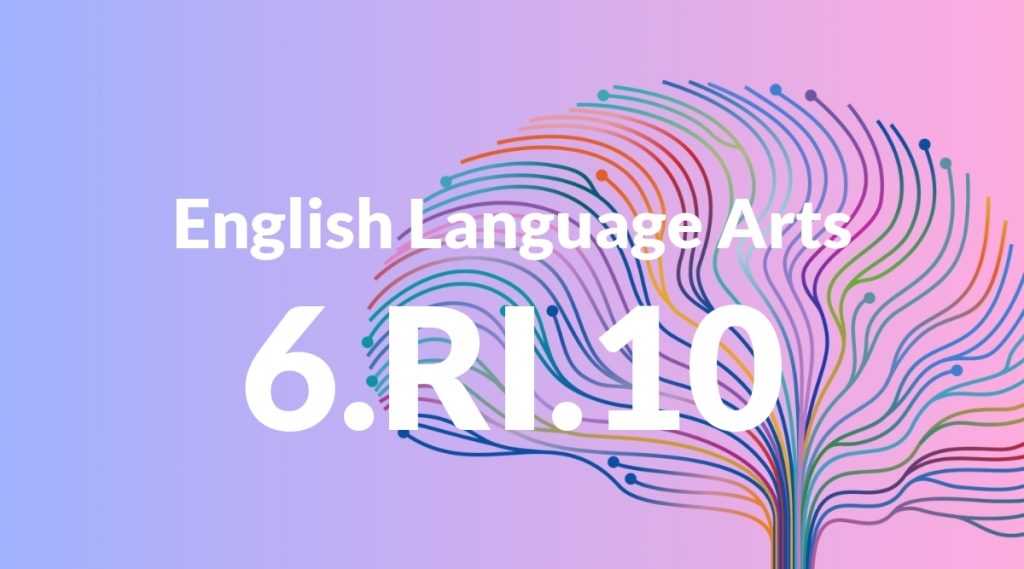Standard: 6.RI.10 – By the end of the year, read and comprehend literary nonfiction in the grades 6-8 text complexity band proficiently, with scaffolding as needed at the high end of the range.
Grade level: Grade 6
Subject: English Language Arts
Domain: Reading: Informational Text
Teacher Overview
This standard emphasizes the importance of reading and comprehending complex literary nonfiction texts. It is crucial for developing critical thinking skills and the ability to analyze and evaluate information. Mastery of this standard prepares students for more advanced reading and comprehension tasks in higher grades. Students should have a solid foundation in basic reading comprehension, including the ability to identify main ideas and details, as well as an understanding of nonfiction text structures.
After mastering this standard, students will be able to critically analyze and evaluate complex texts, preparing them for advanced reading and comprehension tasks in higher grades.
Common Misconception 1
A common misconception is that all nonfiction texts are purely factual and unbiased. This is incorrect because authors often have perspectives that influence their writing, and recognizing this bias is essential for critical reading.
Intervention 1
Use guided practice to help students identify bias and author perspective. Provide diverse sources and facilitate discussions on how different authors present information.
Common Misconception 2
Another misconception is that comprehension only involves understanding the literal meaning of the text. Comprehension also includes making inferences, evaluating information, and synthesizing ideas from multiple texts.
Intervention 2
Encourage higher-order thinking by asking students questions that require them to infer, evaluate, and synthesize information. Use graphic organizers to help them organize their thoughts and make connections.
Prerequisite Knowledge
Students should have basic reading comprehension skills, familiarity with nonfiction text structures, and the ability to identify main ideas and supporting details.
Subsequent Knowledge
Students will develop advanced analytical skills, the ability to evaluate the credibility of sources, and the capacity to synthesize information from multiple texts.
Instructional Activities
- Close reading of historical documents
- Group discussions on author bias in news articles
- Comparative analysis of different biographies
- Research projects involving scientific articles




